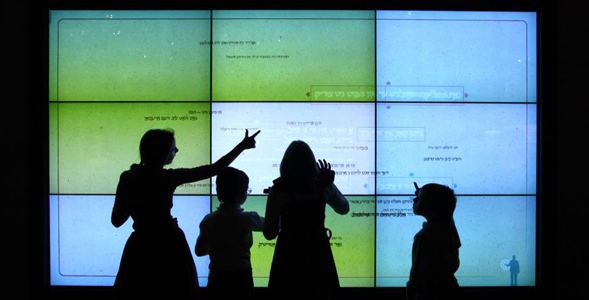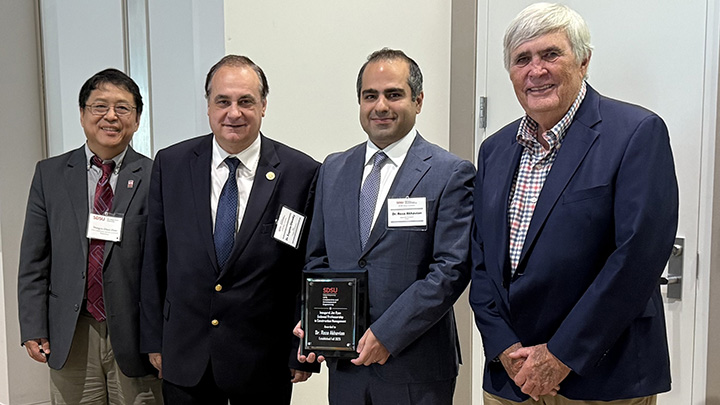In Touch with Jewish Tolerance
SDSU professor, Risa Levitt Kohn, collaborates with other experts to create a new museum experience.

Departing from the stereotypical museum environment that rigidly enforces “Do not touch,” the Jewish Museum and Tolerance Center urges visitors to touch, listen and interact with many different exhibitions.
At the heart of this expansive, $50-million project is a committee of five scholars from Russia, Israel and the United States. Who visualized the exhibitions and helped make them a reality.
San Diego State University’s Risa Levitt Kohn, professor of Hebrew Bible and Judaism and chair of the religious studies department, is one of those scholars and the only woman on the committee.
“The most interesting thing about the museum is that it is really cutting-edge, a new wave of museum experience,” said Levitt Kohn. “The visitor is brought into a closer and more interactive experience with the information they see, touch and feel while they are taken on a journey through Russian Jewish history.”
The provocative new museum in Moscow, Russia, brings attendees deep into the folds of history. Interactive galleries invite museumgoers to see themselves reflected in the garb of a 19th century tradesman, sit in a reconstructed seaside cafe with historical Jewish figures from 18th and 19th century Russia and experience the Torah like never before.
Since its opening in November 2012, the 40,000-square-foot museum has received international acclaim for chronicling the richness and complexity of Jewish life and culture in Russia. High-profile visitors, including the President of Russia, Vladimir Putin, and the President of the State of Israel, Shimon Peres, have toured its exhibits.
Impressive qualifications
At SDSU, Levitt Kohn lectures extensively on the Hebrew Bible, Jewish and Christian origins and Judaism. Outside of the classroom, she works closely with the Israel Antiquities Authority.
Since 2007, she has served as lead curator for the Dead Sea Scrolls Exhibitions at the San Diego Natural History Museum, The North Carolina Museum of Natural Sciences, The Royal Ontario Museum in Toronto, Canada, and a traveling exhibition of the Dead Sea Scrolls that has visited New York, Philadelphia, Cincinnati and Boston.
For the museum in Moscow, Levitt Kohn worked on several components, specifically, the 4-D film at the museum’s entrance, a digital Torah scroll and the “Living Judaism” gallery, which runs throughout the entire museum.
The digital Torah scroll involves a large touch screen with a pointer. When it touches the scroll, that specific weekly portion of the Torah appears in Russian, Hebrew or English. Levitt Kohn wrote the summaries of each weekly and festival Torah portion.
She also wrote in-depth proposals for the content and directions of the biblical theater and "Living Judaism" gallery.
A new experience
Across Europe and North America, Jewish museums tend to be synonymous with Holocaust studies, but the scope of this museum moves beyond that focus. Instead, it provides a comprehensive history of Jewish life in Russia from its origins to the present day.
“I see the museum as a symbol of cultural identification; a place where Russians can go to learn about their past, but also and perhaps more importantly, enter into a dialogue concerning their future,” said Levitt Kohn after visiting the completed museum.
However, the museum is not exclusively for Russians. There is an extensive amount of English material, text and media, which appeals to an international audience. The interactive exhibitions lead people — young and old, Jewish and non-Jewish — on a profound historical journey.
All photos for this article courtesy of The Jewish Museum and Tolerance Center.
Inside the Museum The exhibitions at The Jewish Museum and Tolearance Center are part of a new movement toward an interactive experience.



